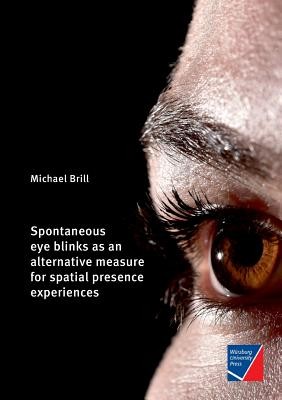
- We will send in 10–14 business days.
- Author: Michael Brill
- Publisher: Würzburg University Press
- ISBN-10: 3958260942
- ISBN-13: 9783958260948
- Format: 14.8 x 21 x 1.5 cm, minkšti viršeliai
- Language: English
- SAVE -10% with code: EXTRA
Spontaneous eye blinks as an alternative measure for spatial presence experiences (e-book) (used book) | bookbook.eu
Reviews
Description
Spatial presence is a state in which media users temporarily overlook the mediated nature of their experience. This study discusses stimulus-dependent structure in spontaneous eye-blink behavior as an alternative to presence selfreport measures. To this end, theories and empirical evidence on presence, spontaneous eye-blink behavior, and existing approaches for presence assessment are used to link antecedent processes of presence, especially attention, to presence and structure in blinking behavior. Three experiments in different media environments relate three different methods for quantification of stimulus-dependent structure to an established presence scale. The results are not conclusive, but raise questions on presence and its measurement, and advance the understanding of stimulus-dependent structure in spontaneous eye-blink behavior.
EXTRA 10 % discount with code: EXTRA
The promotion ends in 22d.22:01:45
The discount code is valid when purchasing from 10 €. Discounts do not stack.
- Author: Michael Brill
- Publisher: Würzburg University Press
- ISBN-10: 3958260942
- ISBN-13: 9783958260948
- Format: 14.8 x 21 x 1.5 cm, minkšti viršeliai
- Language: English English
Spatial presence is a state in which media users temporarily overlook the mediated nature of their experience. This study discusses stimulus-dependent structure in spontaneous eye-blink behavior as an alternative to presence selfreport measures. To this end, theories and empirical evidence on presence, spontaneous eye-blink behavior, and existing approaches for presence assessment are used to link antecedent processes of presence, especially attention, to presence and structure in blinking behavior. Three experiments in different media environments relate three different methods for quantification of stimulus-dependent structure to an established presence scale. The results are not conclusive, but raise questions on presence and its measurement, and advance the understanding of stimulus-dependent structure in spontaneous eye-blink behavior.


Reviews